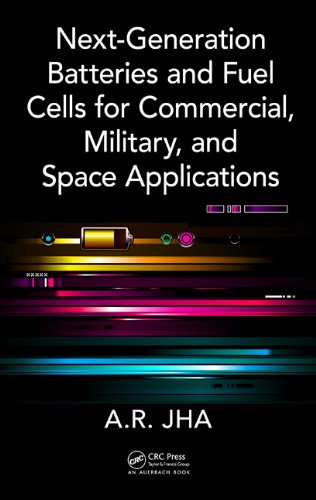

Most ebook files are in PDF format, so you can easily read them using various software such as Foxit Reader or directly on the Google Chrome browser.
Some ebook files are released by publishers in other formats such as .awz, .mobi, .epub, .fb2, etc. You may need to install specific software to read these formats on mobile/PC, such as Calibre.
Please read the tutorial at this link: https://ebookbell.com/faq
We offer FREE conversion to the popular formats you request; however, this may take some time. Therefore, right after payment, please email us, and we will try to provide the service as quickly as possible.
For some exceptional file formats or broken links (if any), please refrain from opening any disputes. Instead, email us first, and we will try to assist within a maximum of 6 hours.
EbookBell Team

4.3
28 reviewsDistilling complex theoretical physical concepts into an understandable technical framework, Next-Generation Batteries and Fuel Cells for Commercial, Military, and Space Applications describes primary and secondary (rechargeable) batteries for various commercial, military, spacecraft, and satellite applications for covert communications, surveillance, and reconnaissance missions. It emphasizes the cost, reliability, longevity, and safety of the next generation of high-capacity batteries for applications where high energy density, minimum weight and size, and reliability in harsh conditions are the principal performance requirements.
Presenting cutting-edge battery design techniques backed by mathematical expressions and derivations wherever possible, the book supplies an authoritative account of emerging application requirements for small, lightweight, high-reliability rechargeable batteries—particularly for portable and implantable medical devices and diagnostic capsules. It devotes a chapter to fuel cells and describes the three distinct types of practical fuel cells, including those that use aqueous electrolytes, molten electrolytes, and solid electrolytes.
A.R. Jha, author of 10 books on alternative energy and other topics, outlines rechargeable battery requirements for electric vehicles (EVs), hybrid electric vehicles (HEVs), and plug-in hybrid electric vehicles (PHEVs). He identifies the unique materials for electrolytes, cathodes, and anodes that are most cost-effective with significant improvements in weight, size, efficiency, reliability, safety, and longevity. Since electrode kinetics play a key role in the efficient operation of fuel cells, the book also provides you with a foundation in the basic laws of electrochemical kinetics.